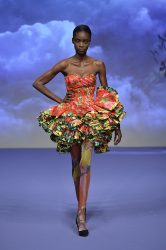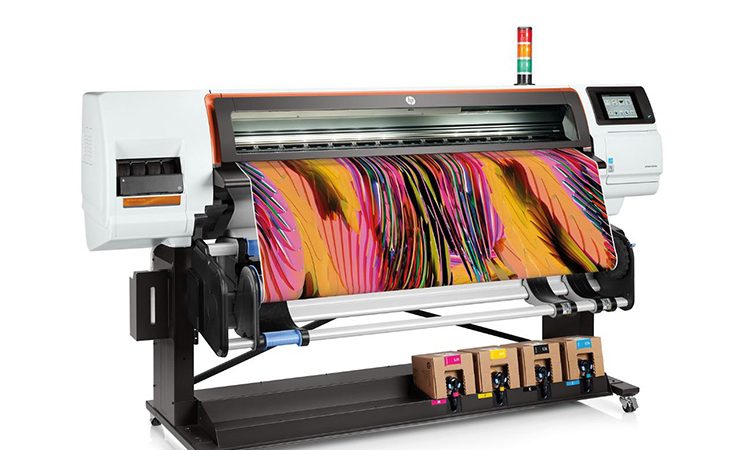Textile printing has become an established part of the wide format market in garments and decor as well as soft signage. Nessan Cleary gets a handle on the options.
There are several different wide-format printing technologies available, from solvent to UV-curable, but none of these offer the opportunity to really transform and grow your business to the extent that dye sublimation on textiles does. This is because textile printing encompasses several markets, from soft signage through to home furnishings and garments. While there is limited crossover between these markets, many wide-format service providers are well-positioned to find and exploit such synergies.
For most, the obvious starting point will be soft signage, typically exhibition graphics, but this also reaches the retail space for things like in-store banners and backlit displays. Printing to fabric makes for lightweight graphics that can be easily delivered and installed, can be treated for flame retardance, washed, reused and easily recycled.
It helps that the water-based sublimation inks are odourless and produce bright, vibrant colours. This is down to the sublimation process, which uses heat to drive the ink into the fibres of the fabric to create a long lasting image that adopts the look and feel of the fabric. Of course, this means that as well as the printer, you’ll also need a heat source, usually a stand-alone calender (heat press) though some printers incorporate one.
There are three basic approaches to dye-sub printing. The transfer method involves printing to a thin transfer paper, and then laying this on top of the fabric in a heat press where heat and pressure force the inks into the fabric. This method is good for signage, decor and garments. These printers typically range from 1 to 1.5m wide. Some of these printers can also print directly to textile though you will still need to put the material through a heat press to sublimate the inks.
The third method is to have an inline heater – usually infra-red lamps – built into the printer. This does away with the cost and hassle of using a heat press but is only really recommended for signage applications. These printers are usually 3 – 5m in width.

British fashion designer Richard Quinn’s 2019 range is made from fabrics printed on Epson SureColor F-series printers
A stitch in time
There are lots of different types of fabric, but dye sublimation only works with polyester or a blended material that contains at least 70% polyester. Ester Sala, HP’s worldwide textile business director, says that people believe that the digitally printed textiles market is strongly dominated by cotton but that the reality is that 60% of it is polyester. She says that the signage market has moved en masse away from PVC for logistical reasons, and adds, ‘Sportswear is growing because [we] have changed our health expectations and our lifestyles, which has led to an enormous growth in sportswear, and this will continue as sports are adopted by new generations; fashion has adopted polyester as a fabric because of its prices and the versatility of all the new blended materials.’
HP has just launched a range of dye sublimation printers under the HP Stitch brand name (see also news, page 9). Joan Perez Pericot, general manager of HP’s large format graphics division, points out that many people, particularly millennials, want to personalise their décor and clothing and are willing to pay up to 10% extra to do so. HP has identified four main markets – soft signage, interior décor, sportswear and apparel. Not surprisingly, these are the same markets that all the other dye sublimation printers are aimed at.
For now, HP has announced two roll-fed machines, both 1.6m wide, and using HP’s proven thermal printheads with 1200dpi native resolution. The S300 is positioned as an easy to use machine. It has four heads, running CMYK inks and using 775cc ink cartridges. It is controlled via an eight inch touchscreen and features front media loading, which is useful when working in tight spaces.
The S500 is a faster machine aimed at higher volume users. It has twice as many printheads, taking two sets of CMYK and printing at a maximum speed of 110sqm/hr in single-pass mode. The inks come in three litre boxes so the printer can be left to run unattended.
HP also has a third machine, the S1000, a 3.2m wide production printer that will be formally launched at the Fespa show in Munich, this May. All three machines should be commercially available this summer.
Mimaki makes a number of textile printers, including the TS55 for printing to transfer paper, launched at the end of last year. This is a 1.9m wide machine that can take up to eight colours, including blue, magenta, yellow, black, as well as light blue and light magenta, plus fluorescent pink and fluorescent yellow. It has a singlepass mode that can produce 135sqm/hr at 480 x 600dpi, though the standard speed is 50sqm/hr.
Roland sells the Texart range of sublimation printers, with the most recent addition being the Texart RT-640M. It’s targeted at fashion and sportswear as well as display graphics and can print directly to polyester-based textiles and sublimation transfer papers as well as rigid items such as promotional objects, rigid boards, Chromaluxe and ceramic tiles. It comes with a Roland edition ErgoSoft RIP.
Epson has developed the SureColor F-series of sublimation printers, including the top of the range F9300. This uses Epson’s Precision Dot technology, including a halftone module, look-up tables and micro-weave, making it easier to get good results without too much fiddling around. It can produce nearly 109sqm/hr and will handle thinner papers down to 40gsm.
Mutoh has developed several dye sublimation printers, including the ValueJet 1604WX, a 1.6m wide entry-level model that’s capable of printing in-store decoration and displays, textile banners, sportswear and personalised home decoration as well as transfer to rigid objects such as mugs. It can produce up to 22sqm/hr at 360 x 1080dpi resolution.
Sabur Digital distributes the Korean DGI range of sublimation printers. This includes the HSFT III, a 1.85m wide machine printing direct to transfer paper. It uses Kyocera greyscale printheads with a choice of having three heads and four colours, or four heads and six colours. It offers resolution up to 600 x 1200dpi and print speeds of up to 250sqm/hr. DGI also offers a mobile app that lets users monitor these printers in real time.
EFI has several types of sublimation printers, with the Reggianni printers mainly covering décor and garments while its Vutek machines primarily cater for soft signage. For wide format use, for example, there’s the Vutek FabriVu series, available in both 3m and 5m versions. Last year EFI added inline fixation to the 3m wide FabriVu 340 so that it can print direct to direct to fabric without needing a separate calender.
Dye sublimation is not the easiest market to get into, as you’ll also need a heat press to sublimate the prints as well as any washing, sewing and other finishing equipment. But the potential market opportunity continues to grow, both in terms of signage as well as interior furnishings and clothing, which can cover everything from workwear to fashion and sportswear.





